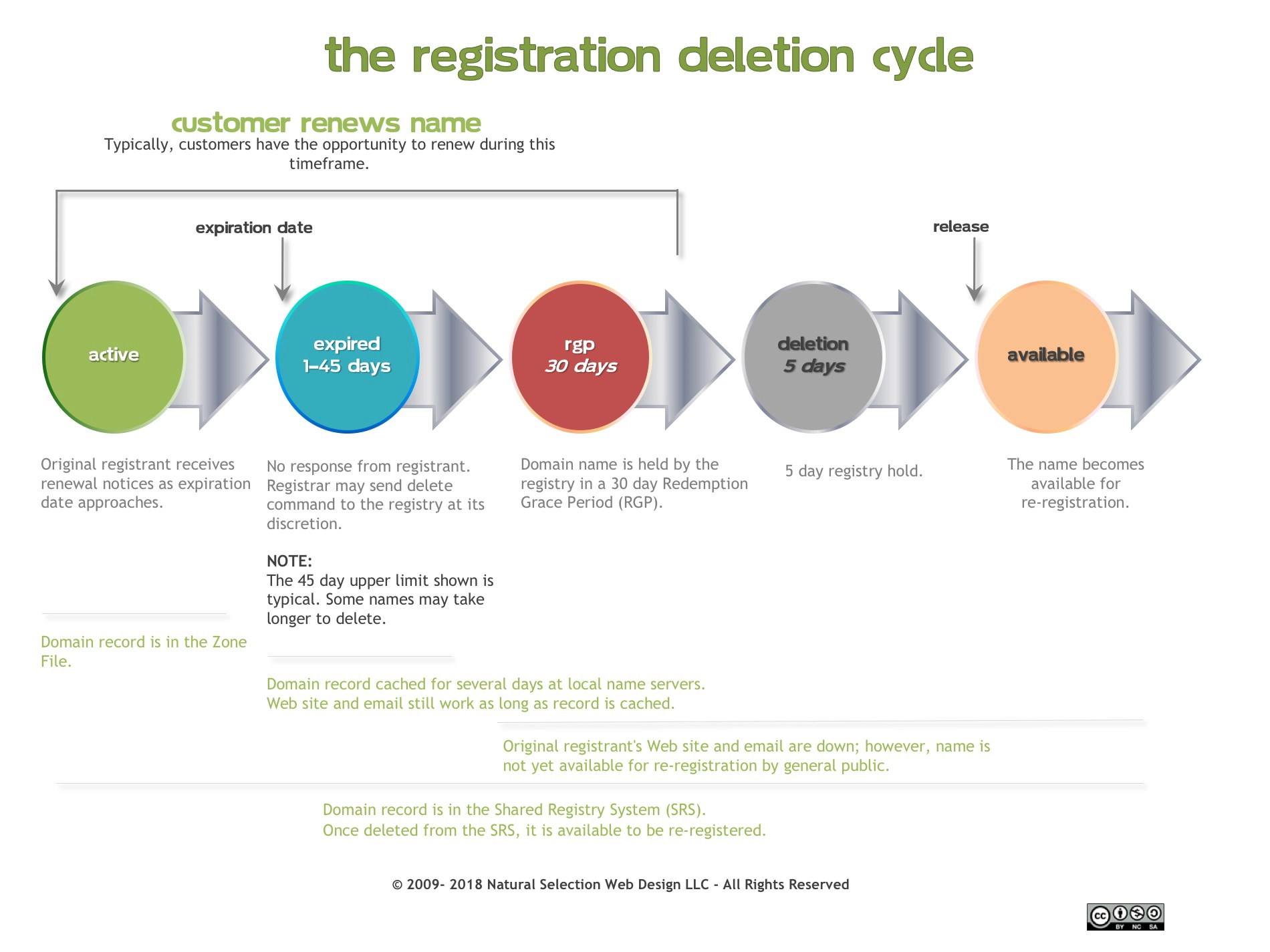Hamburg PA, 19526 610.562.2900
Marysville WA, 98720 360.322.4907

So you procrastinated too long and didn't renew your domain name or there's a specific name you want that's already in use...

Ever wondered what happens when you forget to renew your domain name or what the process is when a domain becomes available again for registration? Let’s dive into the lifecycle of a domain name to understand the critical stages and how you can avoid losing a valuable online asset.
During this stage, the domain is active and functioning as expected. If you are the domain owner, your website, email, and other services linked to the domain will continue to operate. This stage usually lasts as long as your registration period, typically between 1-10 years depending on your agreement with the domain registrar.
Before the domain’s expiration date, you will receive renewal notices from your registrar to remind you to renew the domain. This is a key point where action is needed to avoid entering the next stage.
If the domain is not renewed by the expiration date, it enters the expired stage. During this period, the domain owner still has a chance to renew, but web services associated with the domain (like your website or email) may stop working. It is essentially in a “grace period.”
Most registrars allow a 1 to 45-day window to renew the domain. This gives you a bit of breathing room if you miss the initial renewal window but is not guaranteed — the length of this period can vary depending on your registrar’s policies.
Once the domain enters the Redemption Grace Period (RGP), it has been deactivated, but it’s not gone forever. During this 30-day period, the domain is still registered to you, and you have the option to restore it — but often at a higher fee, sometimes called a redemption fee.
This phase is essentially the last chance to recover your domain before it is released to the public. If no action is taken, the domain moves to the next phase.
If the domain is not redeemed during the RGP, it enters the Pending Deletion phase, lasting around 5 days. During this time, no one, including the original owner, can register or redeem the domain.
This is the final step before the domain becomes publicly available. Once it’s released, anyone can register it, which means your domain can potentially be lost to another party.
After the Pending Deletion stage, the domain is officially available for anyone to register. This is when domain investors and businesses often jump in to acquire desirable domain names, sometimes using specialized tools or backorder services to get ahead of competitors.
For businesses or individuals, losing a domain at this stage can be devastating, especially if it has strong brand value or SEO rankings.
Letting your domain reach the Pending Deletion stage can have severe consequences. If your domain has been registered for several years, has valuable backlinks, or sees consistent traffic, it is highly likely to be targeted by domain squatters. These are individuals or companies that snatch up expired domains and re-list them for sale — often for thousands of dollars.
Domain squatters take advantage of the existing value built into the domain, such as SEO rankings or recognizable branding. Once they grab your domain, they’ll likely park it, showing ads or simply leaving it idle while waiting for an interested party (often the previous owner) to buy it back at a much higher price.
If your domain is particularly valuable, squatting services might even outbid each other to acquire it, making it even more difficult or expensive to retrieve.
Losing control of a domain can cause disruption, especially if your domain is tied to important business or personal ventures. Here are a few tips to avoid losing your domain:
By staying informed about the domain lifecycle and taking proactive measures, you can protect your valuable online presence and avoid falling victim to domain squatters.